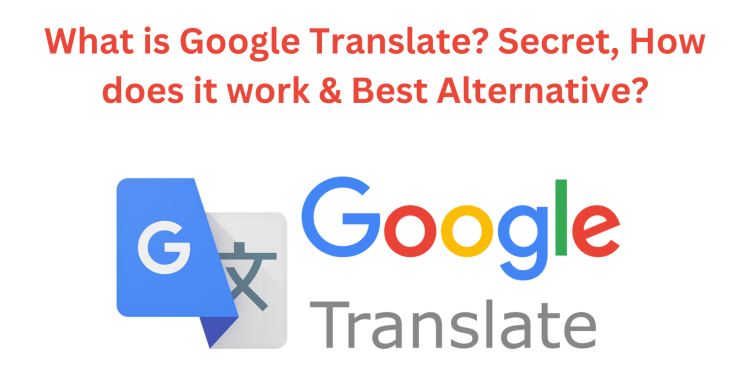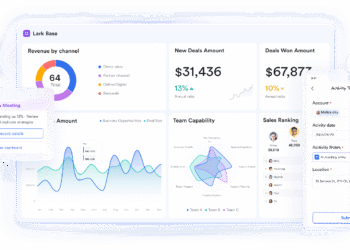Google Translate serves as a complimentary online tool developed by Google, enabling users to convert text, speech, and even images with written words from one language to another. Although the translations are generated by a computer and may not be entirely precise, they are usually adequate for conveying the basic message. You can access this service through its website, mobile applications, and browser add-ons.
How Does Google Translate Function?

Google Translate’s technology has seen significant enhancements over its lifespan, shifting from older statistical methods to modern neural-based approaches. Below is an overview of the technological framework behind this translation tool:
Traditional Statistical Methods:
In its early stages, Google Translate relied on Statistical Machine Translation (SMT). This technique used large databases of translations done by humans to statistically assess the best possible translation for a given text. Essentially, it predicted the probability of a particular sequence of words in the target language corresponding to a sequence in the source language.
Transition to Neural Networks:
Nowadays, the service employs Neural Machine Translation (NMT), harnessing the capabilities of artificial neural networks to translate text. NMT models gain their training from extensive data sets, which allow them to analyze the full context of a sentence. This leads to translations that are usually more coherent and accurate.
Sequence-to-Sequence Framework:
The neural networks in use generally apply a sequence-to-sequence model. This form of model accepts a string of words and outputs another string of words. During training, the model aims to fine-tune its parameters to create the most accurate translations possible, based on the source text.
Attention Techniques:
Incorporating attention mechanisms has been a major advancement in NMT models. These mechanisms prioritize specific portions of the source sentence during the translation process, which aids in creating more natural and contextually appropriate translations.
On-the-Spot Translations:
For instant speech and image-based translations, Google Translate amalgamates voice recognition software and Optical Character Recognition (OCR) technologies with its machine translation engines. This allows the tool to deliver immediate translations for different forms of media.
Community Input:
The service also uses contributions and corrections from its user base to refine its algorithms, thereby improving the system’s overall translation quality.
While Google Translate is undeniably a valuable asset for translating content quickly, it’s important to remember that it has its limitations. It may not fully capture the subtleties, cultural nuances, or idiomatic expressions that a human translator could. Nevertheless, it serves as a practical solution for immediate translation needs.
Advantages of Using Google Translate
In today’s globalized world, communication across linguistic barriers is more important than ever. Enter Google Translate, a revolutionary digital service that has transformed the way we understand and interact with different languages. Although it’s not a perfect system, Google Translate offers a plethora of benefits that can be advantageous in various situations. Let’s delve into some of these perks.
Bridging Communication Gaps
Google Translate is a powerful tool for breaking down language barriers, thereby fostering better understanding and communication between individuals from different linguistic backgrounds. Whether you’re traveling, conducting international business, or communicating with a diverse community, this service can serve as a crucial link.
Versatility in Formats
One of Google Translate’s most compelling features is its adaptability. The service isn’t limited to just text-based translations; it offers voice input, image translation through Optical Character Recognition (OCR), and even real-time conversation translation. This multi-format approach caters to different user needs and makes the service incredibly versatile.
Immediate Accessibility
Need a quick translation? Google Translate is just a click or tap away. Its quick, on-the-spot translations can be invaluable when you’re in a hurry or don’t have access to professional translation services. It’s accessible through various platforms—web, mobile apps, and browser extensions—making it easy to use wherever you are.
Wide Range of Languages
One of the standout features of Google Translate is its extensive language support. With the ability to translate between numerous languages, including less commonly spoken ones, it serves as an invaluable resource for many around the world.
Educational Utility
Google Translate isn’t just for travelers or business professionals; it’s also an educational tool. Students learning a new language can use it as a supplementary resource. While it shouldn’t replace formal language education, it can help learners understand basic phrases, sentence structures, and vocabulary.
User-Friendly Interface
Ease of use is another notable advantage. The service is designed to be intuitive, meaning you don’t have to be tech-savvy to navigate through it. Features like ‘auto-detect language’ simplify the user experience further.
Community-Driven Improvements
Users have the opportunity to suggest translations and flag errors, which means that the system is continually improving. The community-driven aspect adds an extra layer of reliability and accuracy over time.
Cost-Effectiveness
Last but not least, Google Translate is free. While professional translation services may offer higher accuracy, they come at a financial cost. For everyday situations and non-critical business activities, this service provides a cost-effective alternative.
Boundaries of Google Translate
In the digital age, Google Translate stands as a beacon of linguistic versatility, offering quick translations in a multitude of languages. While its merits are abundant, it is equally important to recognize the limitations of this service. Understanding these constraints can guide us on when to rely on Google Translate and when to seek alternative solutions.
Linguistic Nuance and Cultural Context
One of the most glaring limitations is the tool’s inability to capture the subtleties and cultural implications of language. For instance, idioms, colloquialisms, and culturally specific expressions are often translated too literally, which can lead to misinterpretations.
Technical and Specialized Vocabulary
While Google Translate performs admirably with everyday language, it struggles when it comes to highly specialized or technical terminology. Fields like law, medicine, and engineering have specific jargons that the service sometimes fails to translate accurately.
Sentence Structure and Grammar
Languages have unique rules and structures that may not correspond directly with those of another language. While Google Translate can handle basic sentences, complex structures with multiple clauses can trip it up, resulting in awkward or incorrect translations.
Real-time Conversational Limits
Although the service offers real-time conversation translation, the effectiveness of this feature can be hit-or-miss. Factors like background noise, accents, and fast speech can all affect the accuracy of the translation, making it less reliable in dynamic environments.
Limitation on Text Length
Google Translate has a character limit for each translation request, which can be a hindrance when you need to translate large documents. While you can break the text into smaller chunks, this approach may compromise the context and overall meaning.
Uncommon Languages and Dialects
While Google Translate supports a wide array of languages, there are still many dialects and less commonly spoken languages that are not included. Additionally, the quality of translation can vary significantly depending on how widely the language is spoken and the amount of training data available.
Privacy Concerns
For sensitive or confidential information, Google Translate may not be the best choice. Translated text could be stored and processed, posing a risk when translating sensitive or confidential material.
Over-reliance and Learning Stagnation
There’s a temptation to over-rely on Google Translate, especially for language learners. This can hinder one’s efforts to truly learn and understand a language, as it makes it easy to bypass the struggle that comes with learning.
Top Alternatives to Google Translate
1. DeepL
- Strengths: DeepL often excels where Google Translate struggles—namely, in the nuances and context of translation. It uses a neural network for more accurate and contextually relevant translations.
- Limitations: It supports fewer languages compared to Google Translate, and the free version has a limited number of characters you can translate at one time.
2. Microsoft Translator
- Strengths: This tool offers real-time translation and transcription services. It also allows multi-device conversations, making it useful for business settings where multiple parties are involved.
- Limitations: Like DeepL, Microsoft Translator supports fewer languages than Google Translate.
3. Babelfish (by Yahoo!)
- Strengths: Babelfish is one of the oldest translation services available and offers reliable basic translation for a decent number of languages.
- Limitations: The translation algorithms are generally not as advanced as those of Google Translate or DeepL, making it less effective for nuanced texts.
4. Linguee
- Strengths: Unlike traditional translation services, Linguee provides example sentences from a variety of sources to show words in context. This is particularly useful for academic or professional writing.
- Limitations: It’s not designed for large blocks of text or real-time translation. It’s more of a language reference tool.
5. iTranslate
- Strengths: Available as a mobile app, iTranslate is convenient for travelers. It offers voice conversation capabilities and also has a dictionary and phrasebook.
- Limitations: Some features, like offline translation, are only available in the paid version.
6. PROMT
- Strengths: PROMT is well-suited for business and specialized translations. It excels in handling documents and preserving their formatting.
- Limitations: The interface and user experience aren’t as polished as some other options, and it can be expensive.
7. Translate.com
- Strengths: This service offers human translations as well as machine translations, making it versatile. It also allows for community contributions to improve translation quality.
- Limitations: Human translations can take time and cost money.
8. Yandex.Translate
- Strengths: Known as Russia’s answer to Google, Yandex.Translate is a solid free option that provides support for a variety of languages, including some that are less commonly supported.
- Limitations: While it is a robust tool, it might not be as accurate as some of the more specialized services for certain language pairs.













